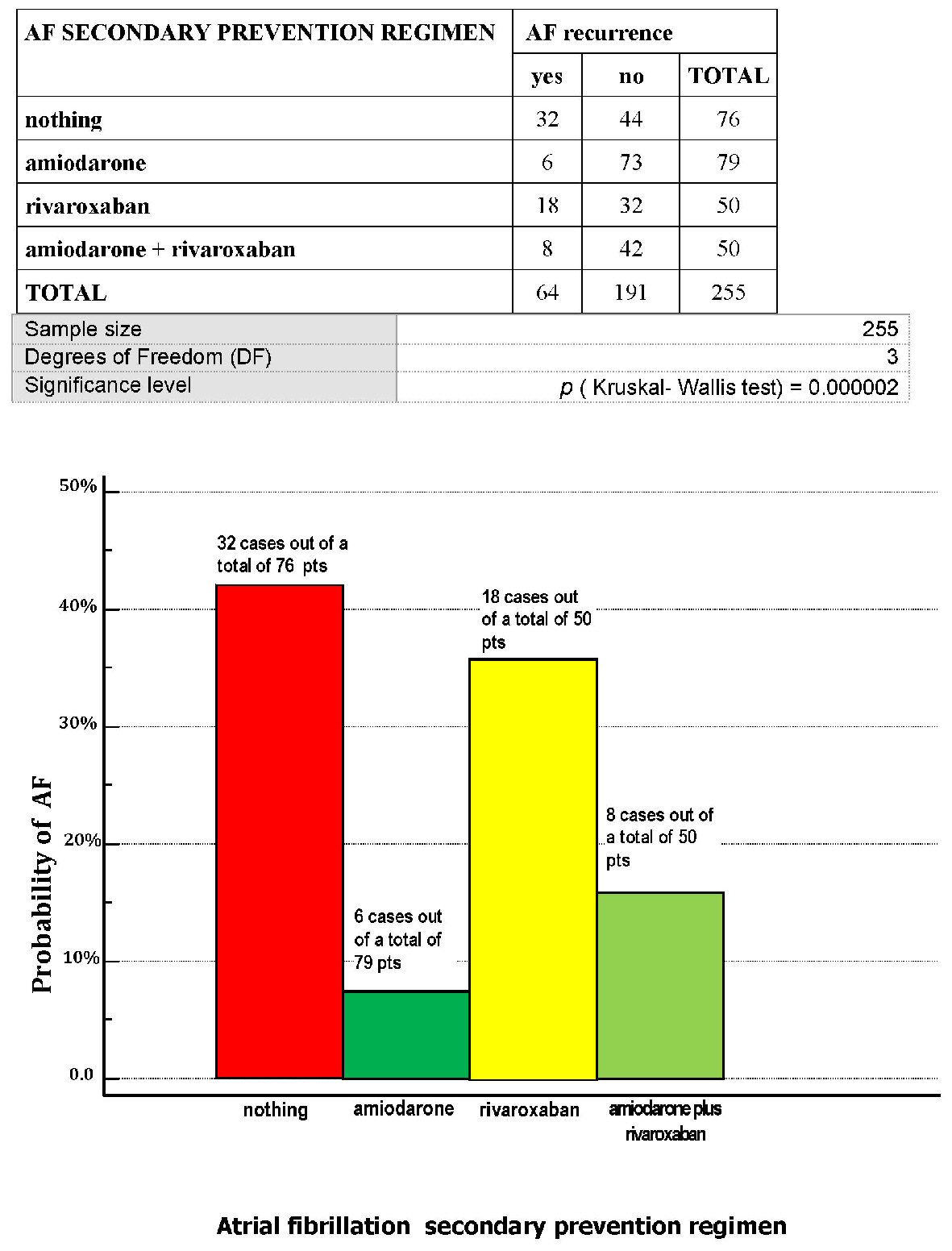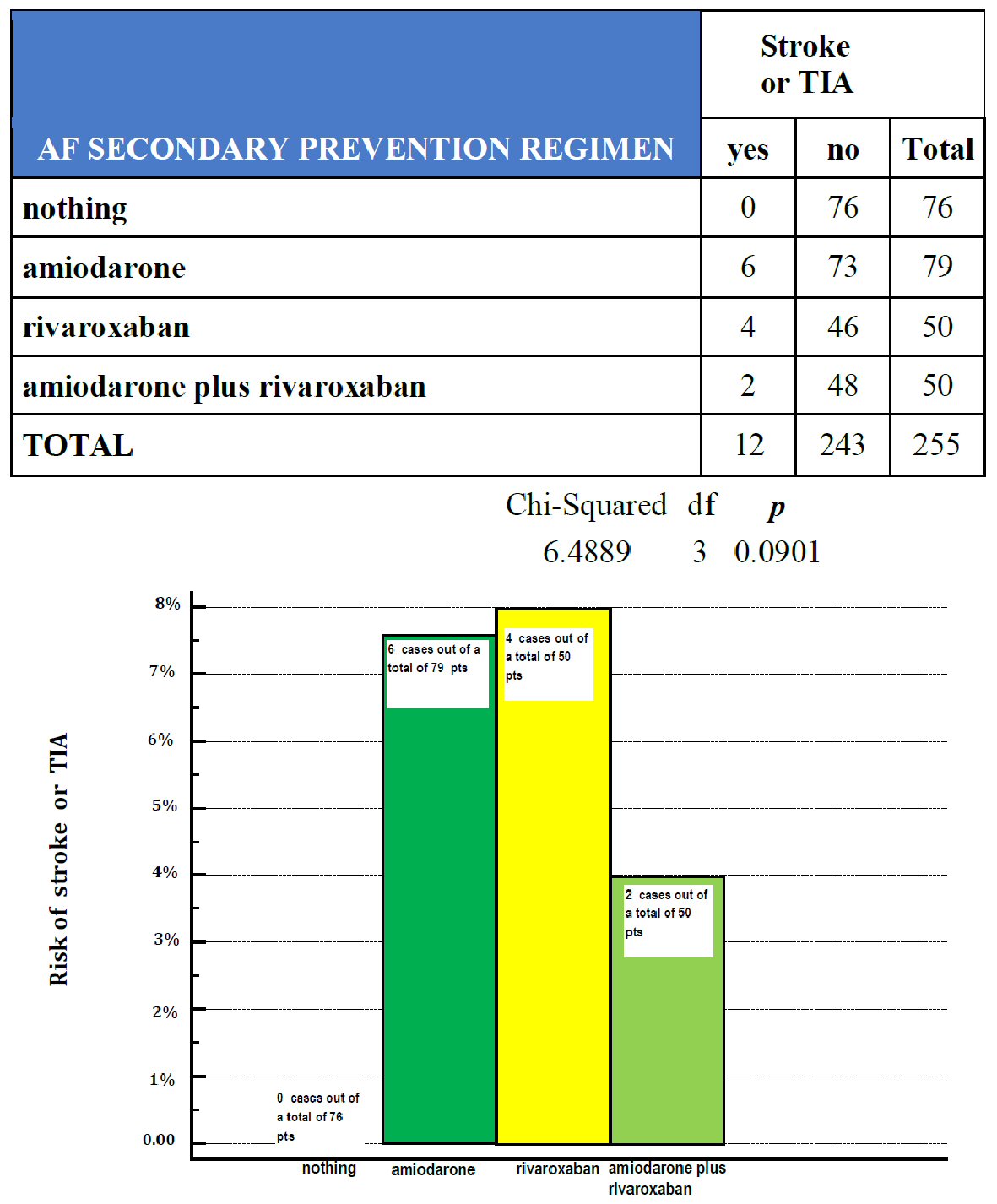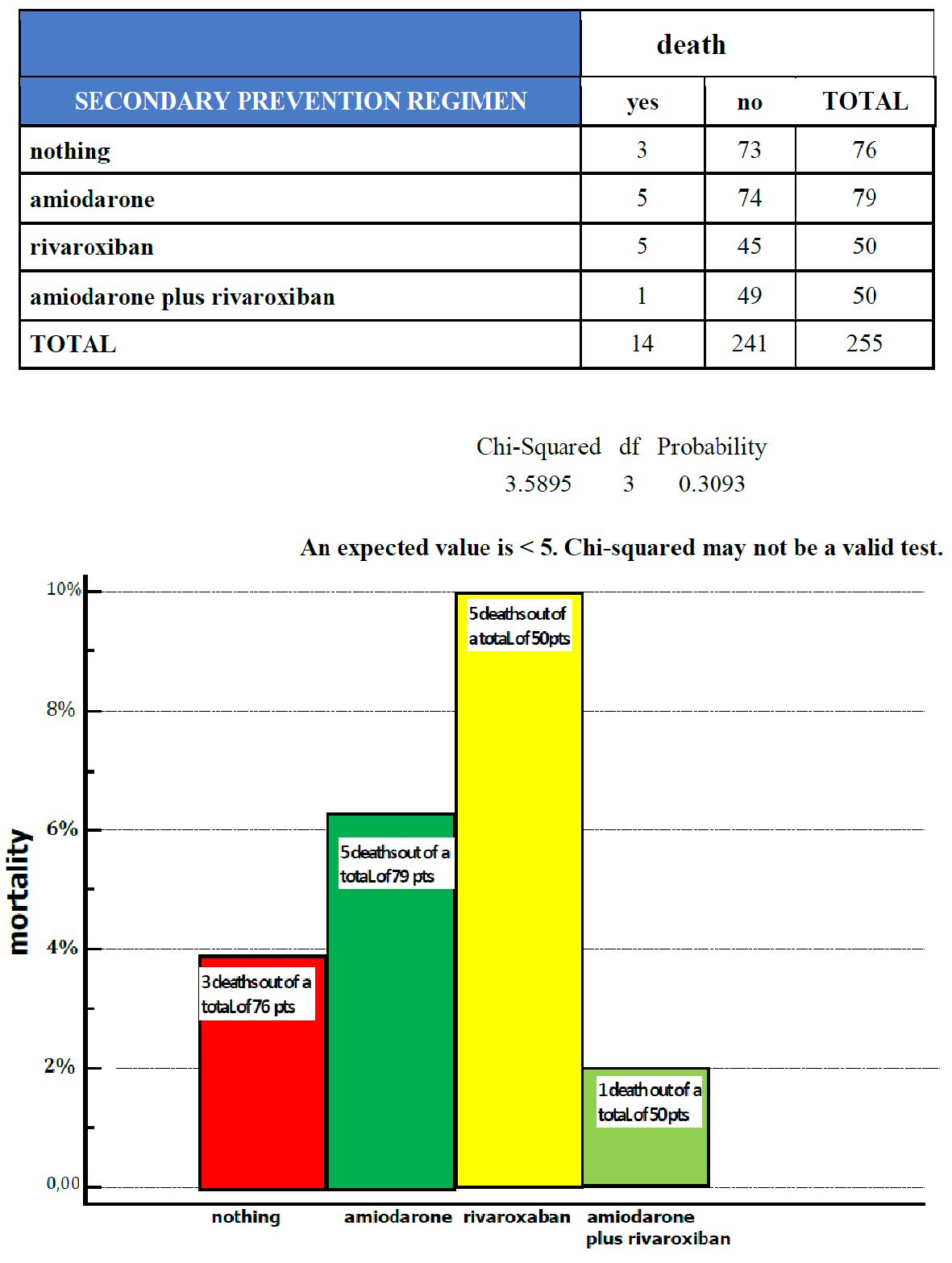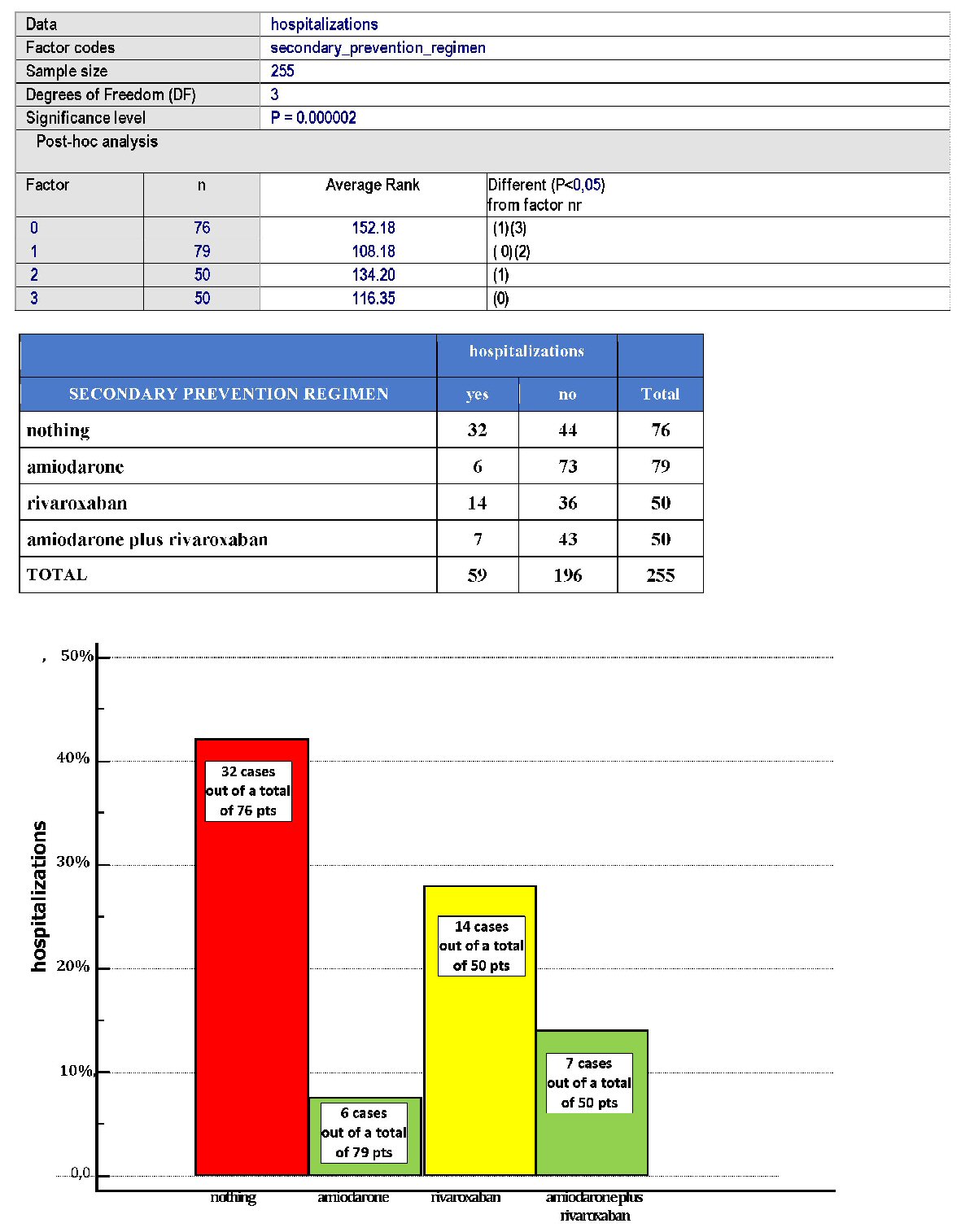Figures

Figure 1. Through a series of patients retrospectively gathered, who had been involved in a program of AF secondary prevention, the distribution of the probability of atrial fibrillation (AF) relapse has been searched for, depending on the type of approach established for every patient: no drugs (“nothing”), amiodarone 200 mg per day, rivaroxaban 20 mg per day, amiodarone 200 mg per day plus rivaroxaban 20 mg per day. AF: atrial fibrillation; pts: patients.

Figure 2. Across a series of patients with a history of AF, retrospectively gathered according to a design of retrospective cohort study, the respective probability of being involved by a stroke or TIA has been investigated for each of the above-reported cohorts: patients who had been exempted from any specific drug (nothing, 76 patients), patients taking amiodarone 200 mg per day (amiodarone, 79 patients), patients subjected to prophylaxis with rivaroxaban 20 my per day (rivaroxaban, 50 patients) and patients taking both amiodarone 200 mg per day and rivaroxaban 20 mg per day (amiodarone plus rivaroxaban, 50 patients). TIA: transient ischemic attacks; pts: patients; df: degrees of freedom.

Figure 3. The distribution of deaths is represented within the four cohorts of patients with a history of atrial fibrillation (AF), subjected to different regimens of AF secondary prevention: no drugs (nothing, 76 patients), amiodarone (79 patients), rivaroxaban (50 patients) and combined administration of amiodarone plus rivaroxaban (50 patients). Legend: pts, patients.

Figure 4. Distribution of hospitalizations within the four cohorts of patients with a history of AF.



